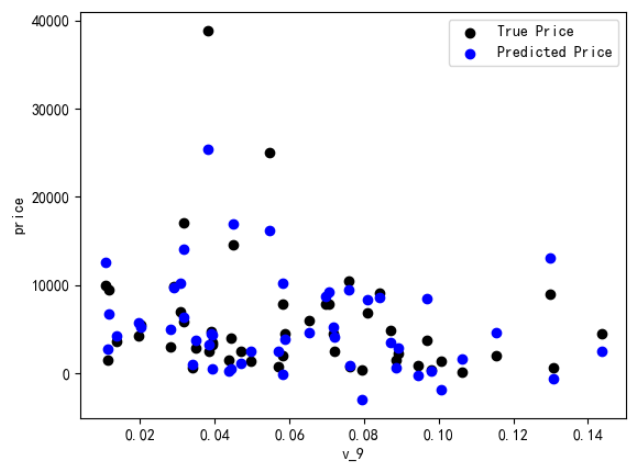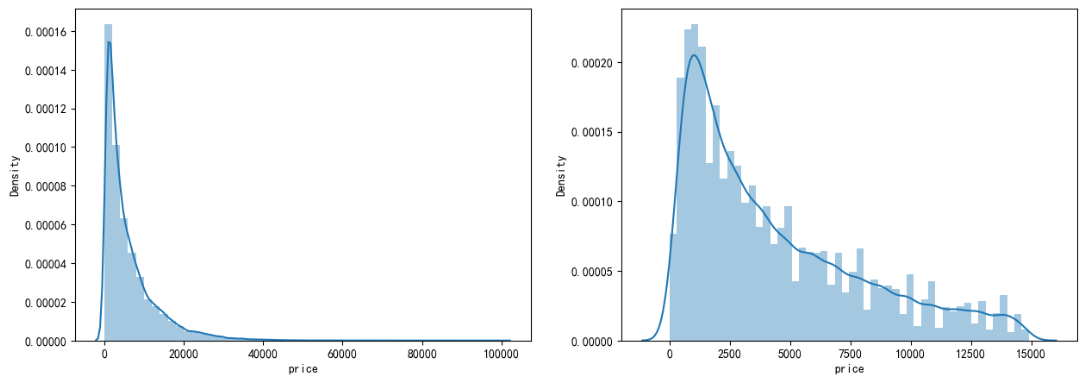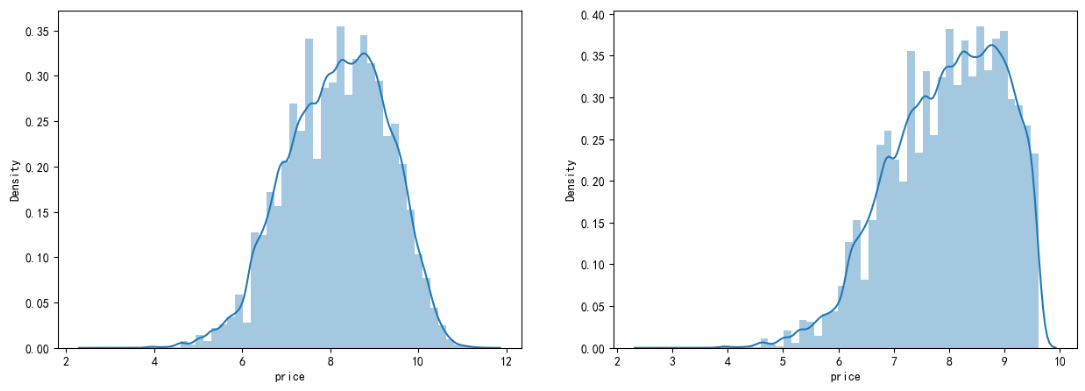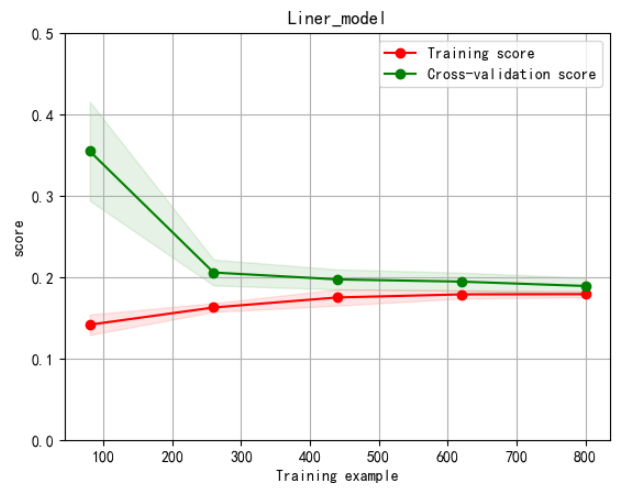汽车交易情况分析及价格预测3_搭建模型
一、线性回归
sample_feature = sample_feature.dropna().replace('-', 0).reset_index(drop=True) sample_feature['notRepairedDamage'] = sample_feature['notRepairedDamage'].astype(np.float32) train = sample_feature[continuous_feature_names + ['price']] train_X = train[continuous_feature_names] train_y = train['price'] model = LinearRegression(normalize=True) model = model.fit(train_X, train_y)
绘制特征v_9的值与标签的散点图,图片发现模型的预测结果(蓝色点)与真实标签(黑色点)的分布差异较大,且部分预测值出现了小于0的情况,说明我们的模型存在一些问题
plt.scatter(train_X['v_9'][subsample_index], train_y[subsample_index], color='black') plt.scatter(train_X['v_9'][subsample_index], model.predict(train_X.loc[subsample_index]), color='blue') plt.xlabel('v_9') plt.ylabel('price') plt.legend(['True Price','Predicted Price'],loc='upper right') print('The predicted price is obvious different from true price') plt.show()

通过作图我们发现数据的标签(price)呈现长尾分布,不利于我们的建模预测。原因是很多模型都假设数据误差项符合正态分布,而长尾分布的数据违背了这一假设。
print('It is clear to see the price shows a typical exponential distribution') plt.figure(figsize=(15,5)) plt.subplot(1,2,1) sns.distplot(train_y) plt.subplot(1,2,2) sns.distplot(train_y[train_y < np.quantile(train_y, 0.9)])

在这里我们对标签进行了对数变换,使标签贴近于正态分布
train_y_ln = np.log(train_y + 1) import seaborn as sns print('The transformed price seems like normal distribution') plt.figure(figsize=(15,5)) plt.subplot(1,2,1) sns.distplot(train_y_ln) plt.subplot(1,2,2) sns.distplot(train_y_ln[train_y_ln < np.quantile(train_y_ln, 0.9)])

再次进行可视化

绘制学习率曲线与验证曲线

二、非线性模型
models = [LinearRegression(), DecisionTreeRegressor(), RandomForestRegressor(), GradientBoostingRegressor(), MLPRegressor(solver='lbfgs', max_iter=100), XGBRegressor(n_estimators = 100, objective='reg:squarederror'), LGBMRegressor(n_estimators = 100)] result = dict() for model in models: model_name = str(model).split('(')[0] scores = cross_val_score(model, X=train_X, y=train_y_ln, verbose=0, cv = 5, scoring=make_scorer(mean_absolute_error)) result[model_name] = scores print(model_name + ' is finished') result = pd.DataFrame(result) result.index = ['cv' + str(x) for x in range(1, 6)] result



